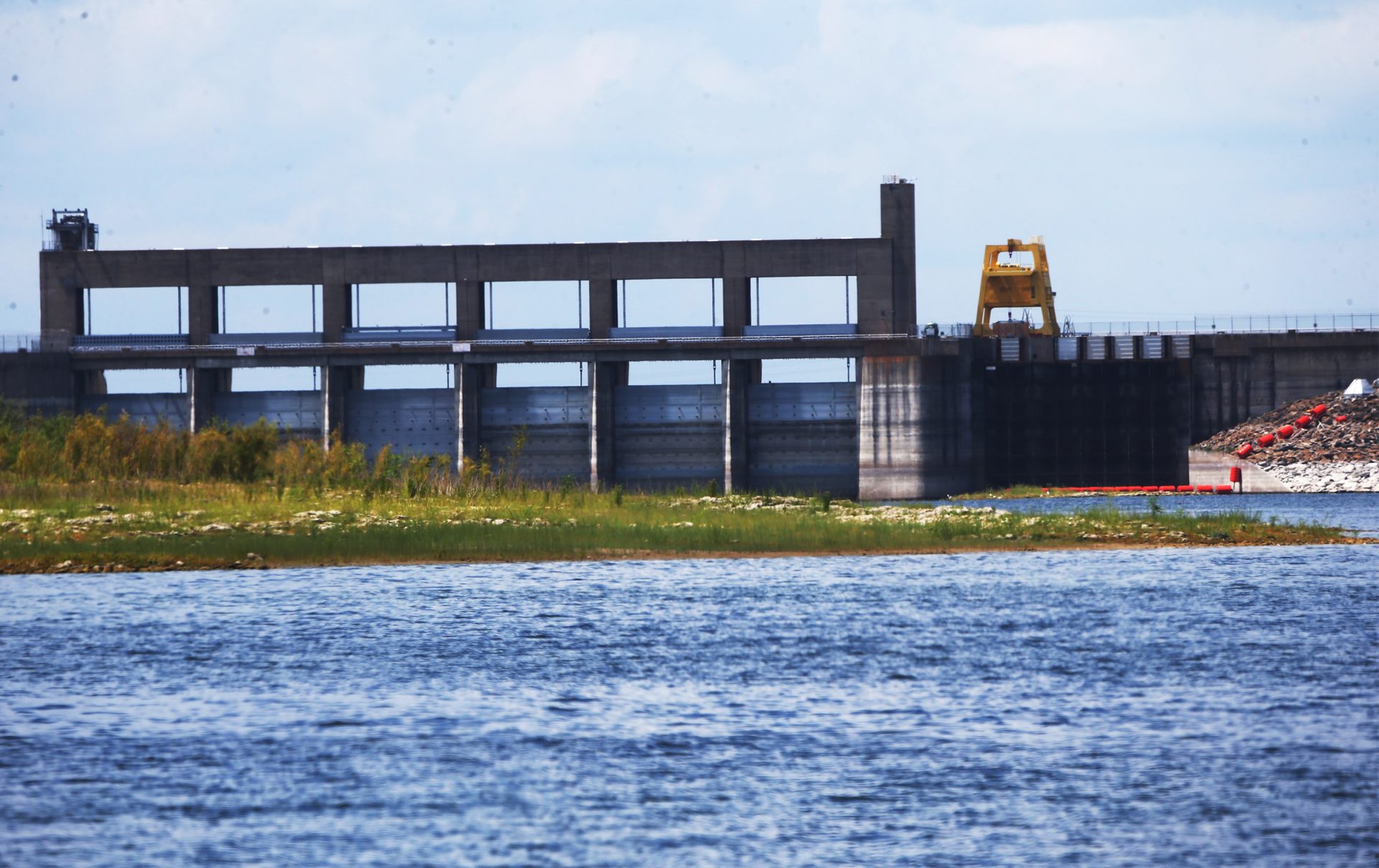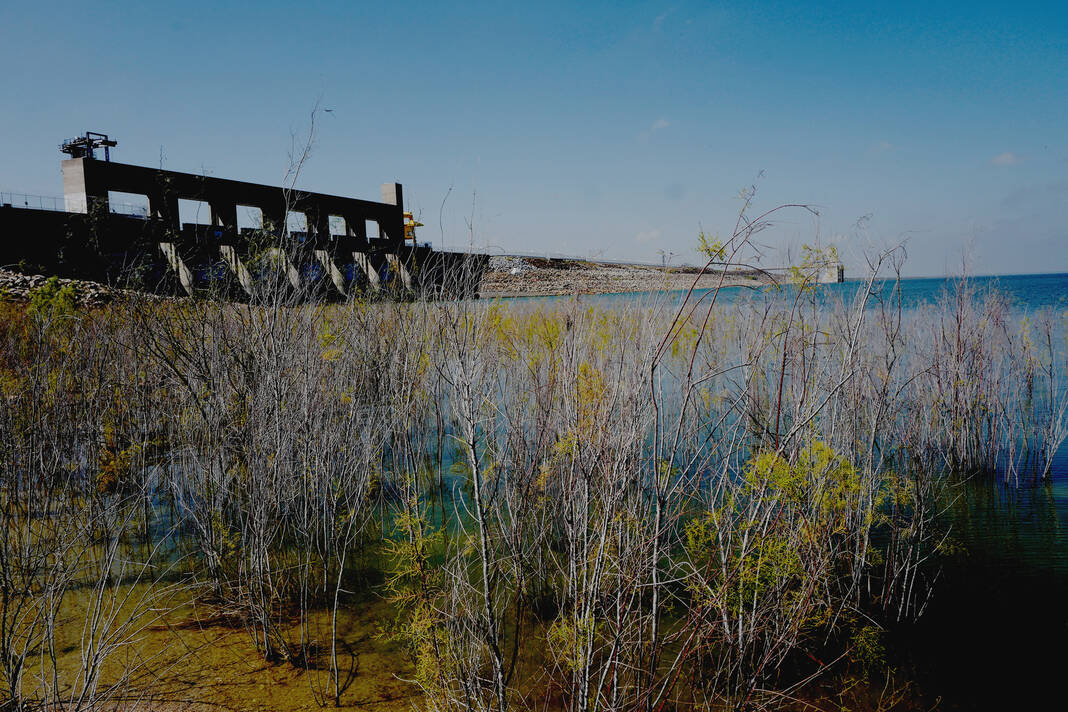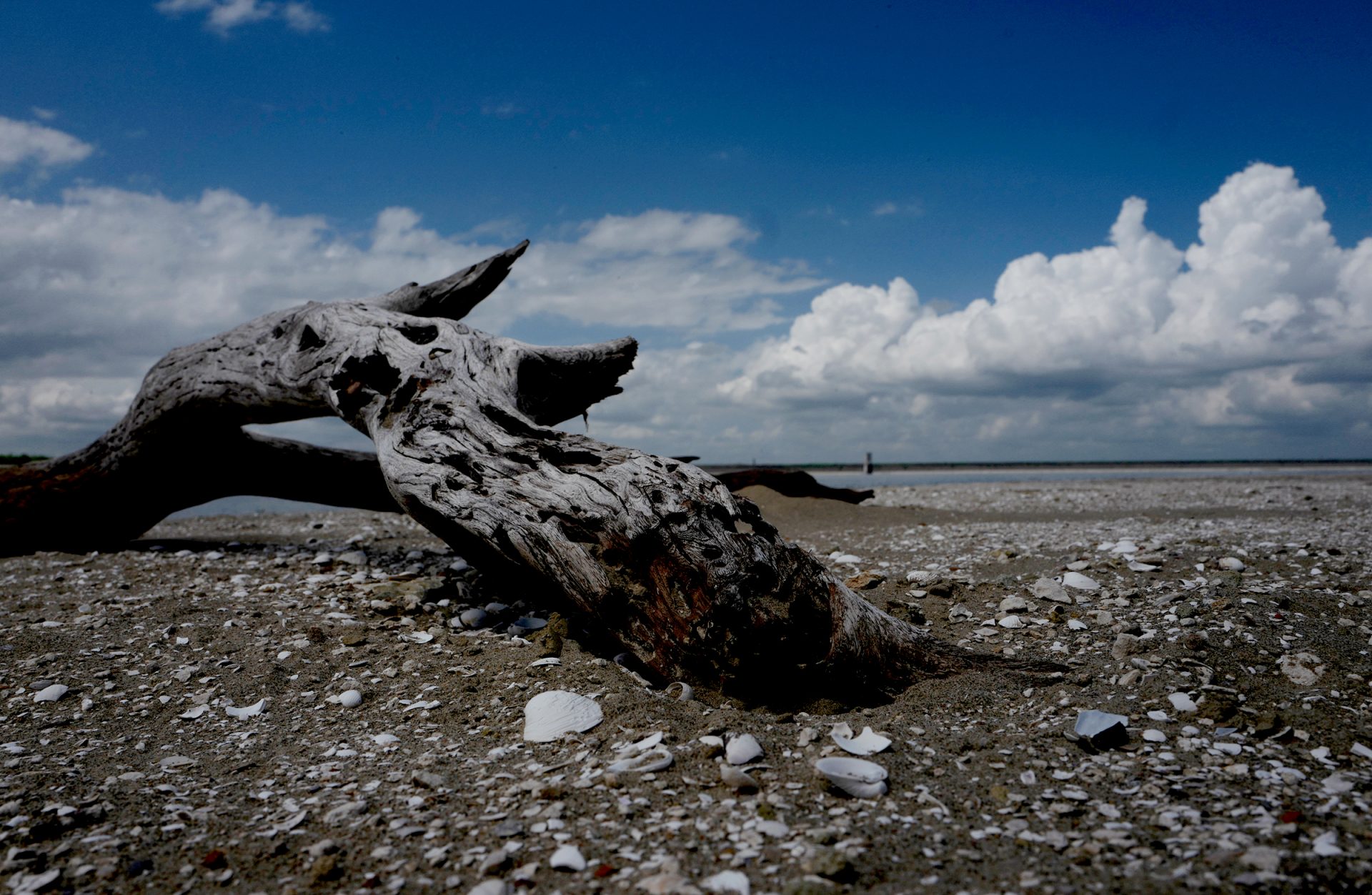Hidalgo County officials have joined forces with leaders from cities and water utilities across the county to create a first-of-its-kind regional drought contingency plan.
The water conservation plan aims to make local responses to water scarcity more uniform and predictable amid an increasingly unreliable water supply reality.
“The effort is aimed at developing uniform triggers among cities and water districts serving Hidalgo County so that residents (can) begin to understand various drought conservation stages,” county officials stated in a Thursday news release.
Currently, municipalities and water districts have their own individual drought contingency plans that are updated every five years, as mandated by state law.
A drought contingency plan typically lays out a multistep process for tamping down on water consumption, such as through restricting the days that residents may water their lawns, or imposing higher utility fees for excessive water consumption.
As certain triggers are met, authorities will invoke increasingly more stringent water restrictions.
But what triggers those stages — and what restrictions are implemented at each stage — differs from one city to the next.
Officials hope that Thursday’s announcement of a region-wide plan will help eliminate those discrepancies and not only make water conservation a more uniform process, but also reduce confusion among residents.
“The initial plan is for all cities and water districts to adopt a single contingency plan that has the same triggers,” the news release states.
“As reserve capacities diminish during drought conditions, every water supplying entity in the county would have the same conservation triggers that tell the consumers the seriousness of the drought,” it further states.
 Falcon International Reservoir is seen on Wednesday, July 24, 2024. (Delcia Lopez | dlopez@themonitor.com)
Falcon International Reservoir is seen on Wednesday, July 24, 2024. (Delcia Lopez | dlopez@themonitor.com)However, cities and water districts will still have a little bit of autonomous flexibility under the regional plan.
They “will be left to their own discretion as to what the triggers would mean for consumers and how these measures would be enforced,” the news release states.
More than 30 representatives from cities and water districts across the area met with county officials at the Mission Event Center on Wednesday to discuss the regional plan.
Now, they will take the concept back to their respective governing boards for official ratification.
The announcement marks a major milestone in Hidalgo County Judge Richard F. Cortez’s efforts to spur local leaders into thinking and strategizing about the Rio Grande Valley’s water supply with a more cohesive mindset.
“This is a long-term issue. We need to develop a regional plan to address future water needs,” Cortez stated.
Though they are called “drought contingency plans,” it’s a bit of a misnomer because, unlike other regions in the state, here, the variable that most often controls water restrictions is not a lack of rainfall, but instead, how much water is stored at Falcon and Amistad international reservoirs.
That’s because the bulk of the Valley’s water comes from a single source — one under significant stress, the Rio Grande.
The river’s long-term viability has been called into question due to a years-long impasse in international diplomacy.
Much of the Rio Grande’s headwaters lie across the border, hundreds of miles away in the mountainous Mexican state of Chihuahua.
 Falcon International Reservoir seen Wednesday, Feb.21 2024 in Zapata County. (Delcia Lopez| dlopez@themonitor.com)
Falcon International Reservoir seen Wednesday, Feb.21 2024 in Zapata County. (Delcia Lopez| dlopez@themonitor.com)But, Mexico is obligated by the terms of a 1944 water sharing treaty with the U.S. to deliver a certain percentage of those tributary flows to the Rio Grande.
Those water deliveries don’t just benefit American water consumers, they’re also crucial to Mexicans living in the border states of Tamaulipas and Nuevo Leon.
The treaty states that Mexico must deliver 1.75 million acre feet of water to the Rio Grande over the course of a five-year treaty cycle. That equates to about 350,000 acre feet per year.
However, abnormally warm years, coupled with drought exacerbated by climate change, has meant that Mexico has been unable to make good on those water deliveries in a timely fashion.
Four years into the current five-year cycle, which is set to end at the end of next October, Mexico is so woefully behind that it couldn’t deliver the water even if it wanted to.
That’s because the country’s own internal reservoirs no longer contain enough volumes of water to pay the water debt, even if Mexico tried to send every last drop downstream.
The crisis has prompted alarm bells from local, state and federal lawmakers, as well as from local farmers and other water experts who are quite literally seeing their livelihoods dry up before their eyes.
In mid-June, the United States’ share of water at Amistad and Falcon fell to an all-time low of just 18.14% — a level not seen since the two dams were constructed.
That figure ticked up slightly after rain events in late June and July, but began to trend downward again in August.
Currently, water levels are hovering at just over 20%, according to the most recent data from the International Boundary and Water Commission.
 Falcon International Reservoir, commonly called Falcon Lake, is shown 40 miles southeast of Laredo on Wednesday, July 24, 2024. (Delcia Lopez | dlopez@themonitor.com)
Falcon International Reservoir, commonly called Falcon Lake, is shown 40 miles southeast of Laredo on Wednesday, July 24, 2024. (Delcia Lopez | dlopez@themonitor.com)But as Mexico continues to drag its feet in response to diplomatic overtures, Valley officials are slowly coming to the realization that the region can no longer depend on its southern neighbor for water deliveries.
That has officials starting to look for novel solutions to an entrenched water scarcity problem, including modernizing drought contingency planning.
The proposed regional plan consists of six stages, beginning with “Stage 1” which would be considered “mild.” Stage 1 would mean a water supplier had 100% of its water reserves available.
The stages continue from Stage 1’s “mild”, to moderate, severe, critical, and then emergency at Stage 5.
As drought conditions worsen, the resultant lower water reserve levels would trigger more advanced stages of conservation.
Whereas Stage 1 assumes a supplier has 100% available in reserve, Stage 2 assumes those levels have fallen to 40%, then 30% at Stage 3, 20% at Stage 4 and finally 15% at Stage 5.
Stage 6, the most dire category, would prompt emergency orders calling for water allocations, otherwise known as water rationing.
Under the terms of the proposed regional contingency plan, this summer’s low reservoir levels would have been considered “critical” and would have put the entire county under Stage 4 restrictions.”
The post Hidalgo County moves toward regional water contingency plan appeared first on MyRGV.com.
 (2).png)
 5 days ago
28
5 days ago
28








 English (US)
English (US)